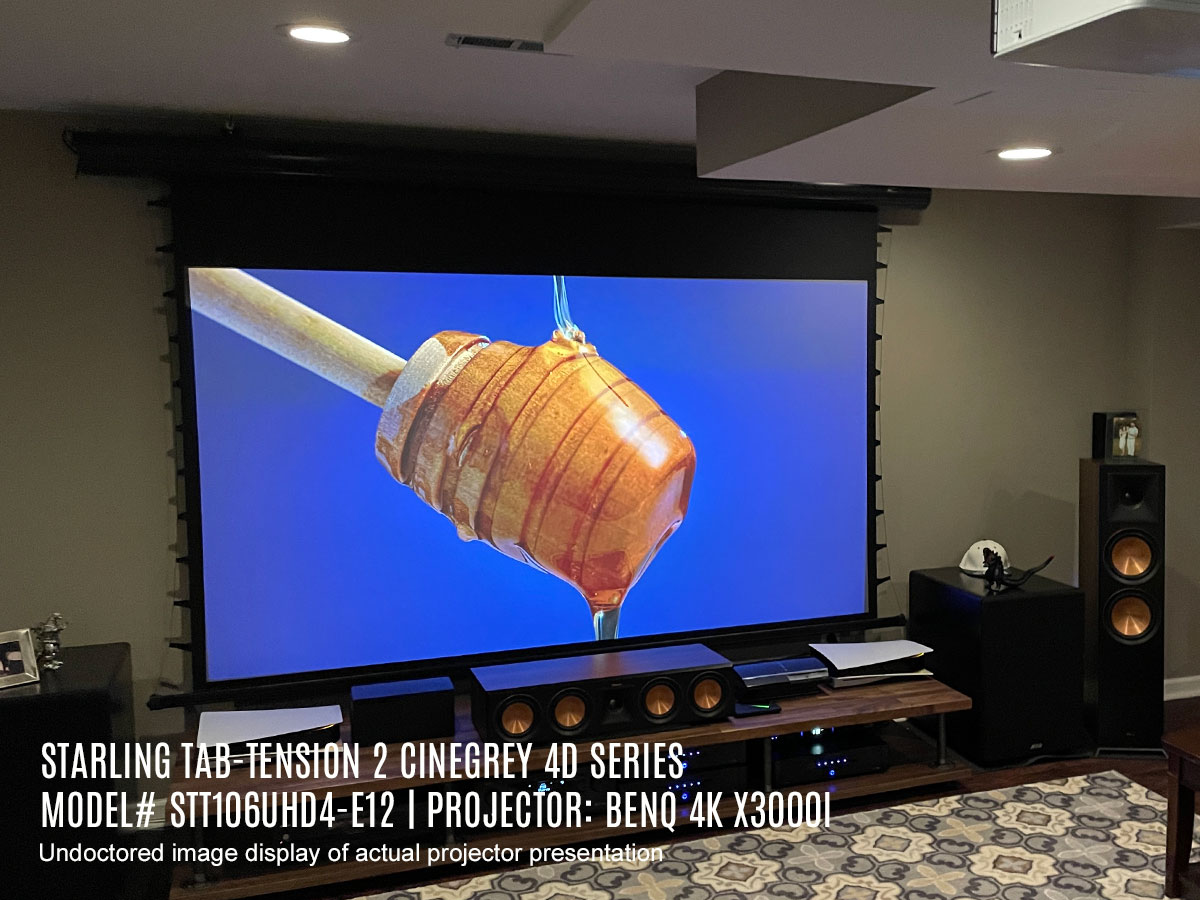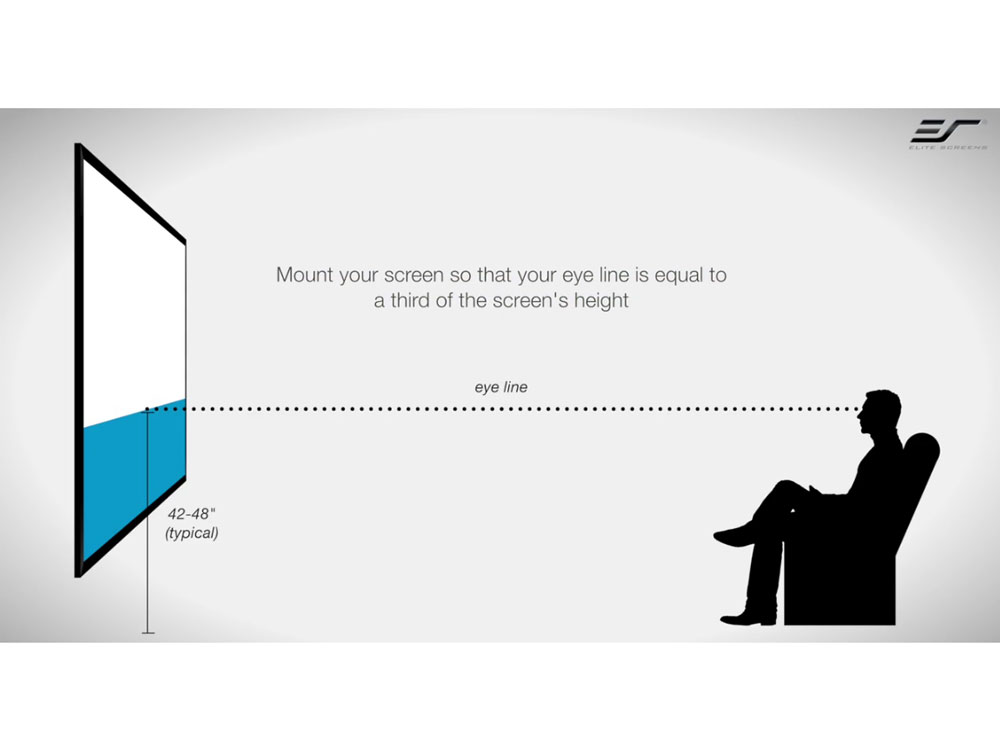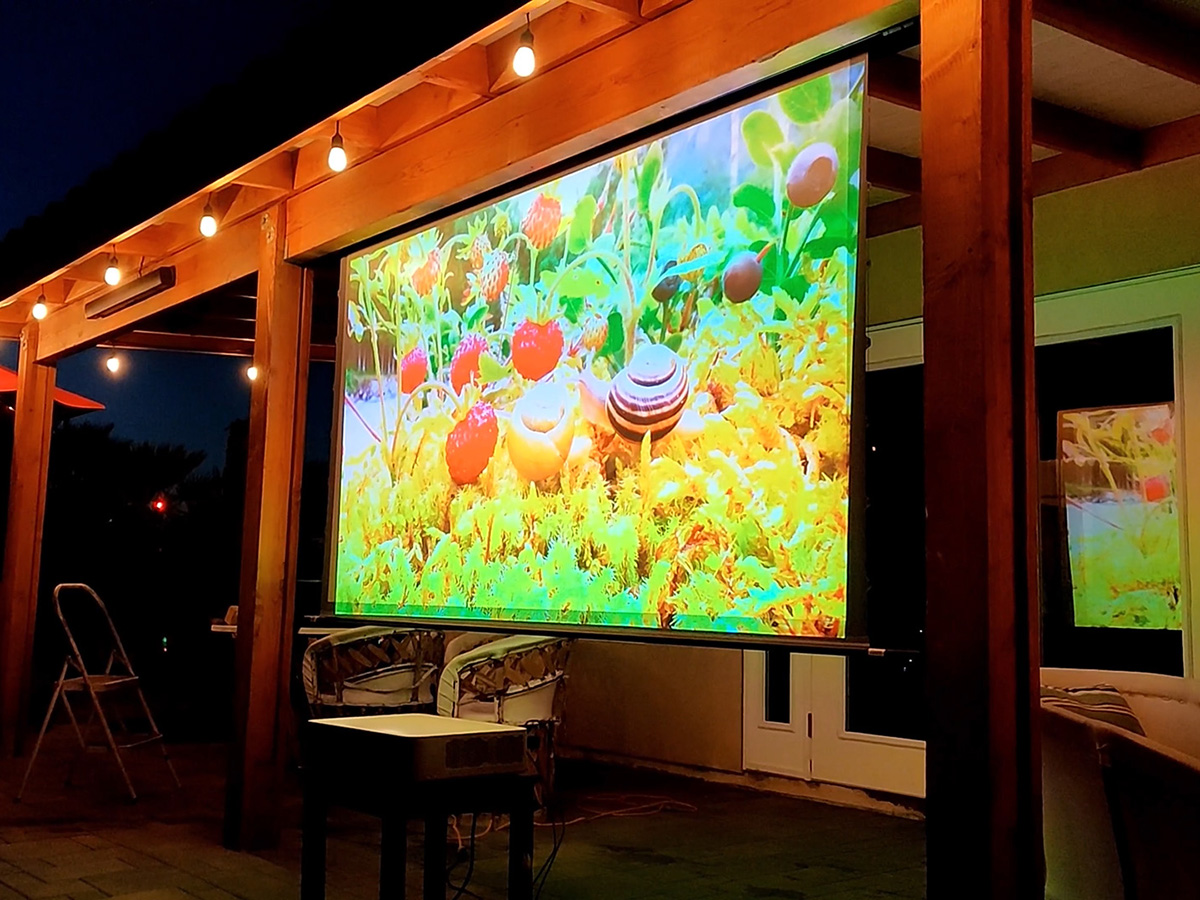The Benefits of a Projector Screen with an Ambient Light Rejecting Surface

In today’s technological age, projectors have become ubiquitous in our daily lives. They are used in offices, classrooms, and homes for presentations, lectures, and entertainment. However, one of the biggest challenges with projectors is ambient light, which can interfere with the image quality. Fortunately, there is a solution to this problem: by using a movie projector and screen with an ambient light-rejecting surface, you can enjoy a superior viewing experience even in brightly lit spaces.
This article will discuss the benefits of using a projector screen with an ambient light-rejecting surface, how they work, and factors to consider when choosing one.
What is an ambient light-rejecting surface?
An ambient light-rejecting surface is a projector screen designed to reflect the projected image back to the audience while absorbing ambient light. This is achieved using a special material that selectively reflects and absorbs light. Ambient light-rejecting surfaces are typically used in brightly lit rooms where the ambient light can interfere with the image quality of the projected content.
Benefits of using an ambient light-rejecting surface
- Improved contrast and color accuracy: One of the main benefits of using an ambient light-rejecting surface is improved contrast and color accuracy. The special material used in these screens can reflect the projected image back to the audience while absorbing ambient light. This results in a vibrant, clear, and crisp image with improved contrast and color accuracy.
- Reduced eye strain: Another benefit of using an ambient light-rejecting surface is reduced eye strain. In brightly lit rooms, the eyes can become fatigued due to the constant adjustment of the pupils to the changing levels of light. With an ambient light-rejecting surface, the eyes do not have to work as hard, resulting in reduced eye strain.
- Enhanced overall viewing experience: Using an ambient light-rejecting surface can improve the overall viewing experience. The improved contrast and color accuracy and reduced eye strain can result in a more enjoyable and immersive viewing experience.
How ambient light-rejecting surfaces work
Ambient light-rejecting surfaces work by selectively reflecting and absorbing light. The special material used in these screens can reflect the projected image back to the audience while absorbing ambient light. This is achieved by combining microscopic reflective particles and a special coating that absorbs ambient light. The reflective particles reflect the projected light back to the audience. At the same time, the special coating absorbs ambient light.
Types of ambient light rejecting surfaces
There are two main types of ambient light-rejecting surfaces: angular reflective and retro-reflective. Angular reflective surfaces are designed to reflect the projected light back to the audience at an angle. In contrast, retro-reflective surfaces are intended to reflect the projected light back to the audience in a straight line.
Angular reflective surfaces are typically used in rooms with high ambient light levels, whereas retro-reflective surfaces are used in rooms with low ambient light levels. The type of ambient light-rejecting surface you choose will depend on the ambient light levels in the room where the projector will be used.
Comparison between ambient light-rejecting surfaces and traditional projector screens
Ambient light-rejecting surfaces offer several advantages over traditional projector screens. Conventional screens are typically designed to reflect all light, including ambient light. This can result in a washed-out image in brightly lit rooms. Ambient light-rejecting surfaces, on the other hand, are designed to selectively reflect and absorb light, resulting in a vibrant, clear, and crisp image even in brightly lit rooms.
Additionally, ambient light-rejecting surfaces can reduce eye strain and enhance the viewing experience. Traditional screens do not offer these benefits.
Factors to consider when choosing an ambient light-rejecting surface
When choosing an ambient light-rejecting surface, there are several factors to consider:
- Ambient light levels: The ambient light levels in the room where the projector will be used will determine the type of ambient light-rejecting surface you should choose.
- Viewing angle: The viewing angle is the angle at which the projected image is viewed. Some ambient light-rejecting surfaces have a limited viewing angle, while others have a wider one. Consider the viewing angle when choosing an ambient light-rejecting surface.
- Screen size: The size of the screen will determine the amount of light absorbed and reflected. Consider the screen size when choosing an ambient light-rejecting surface.
- Installation: Consider the installation process when selecting an ambient light-rejecting surface. Some screens require professional installation, while others can be installed by the user.
Installation and maintenance of an ambient light-rejecting surface
Installing and maintaining an ambient light-rejecting surface will depend on your chosen product. Some screens require professional installation, while others can be installed by the user. Following the manufacturer’s instructions when installing the screen is essential to ensure optimal performance.
Maintenance of an ambient light-rejecting surface typically involves cleaning the screen periodically to remove dust and other debris. Be sure to use a soft cloth and gentle cleaning solution to avoid damaging the screen.
Conclusion
In conclusion, using an ambient light-rejecting surface can significantly improve the image quality of a projector in brightly lit rooms. These screens offer improved contrast and color accuracy, reduced eye strain, and enhanced viewing experience. When choosing an ambient light-rejecting surface, research top brands, such as Elite Screens, and follow manufacturer instructions for installation and maintenance. With an ambient light-rejecting surface, you can enjoy a superior viewing experience even in the brightest rooms.




